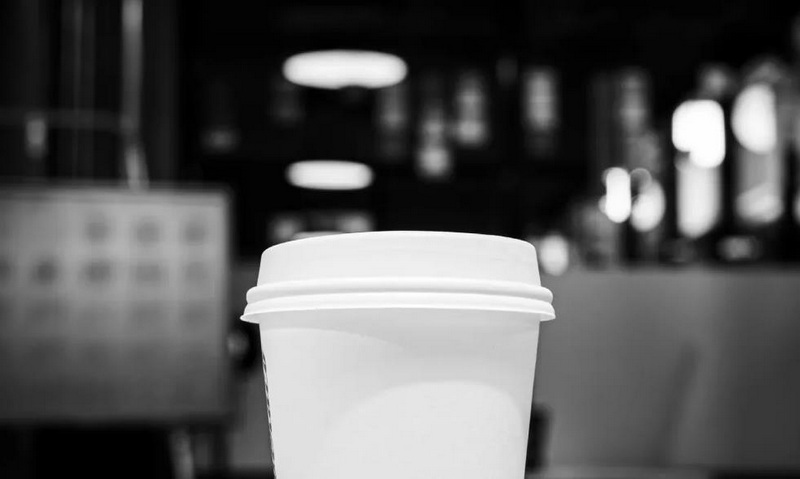
Content Menu
● The Birth of the Disposable Coffee Cup
● Early Innovations and Commercialization
>> Development of New Designs
● The Foam Cup Revolution
● Modern Developments and Environmental Concerns
● The Role of Technology in Recycling
● Cultural Impact and Popularity
● Conclusion
● FAQ
>> 1. When did disposable coffee cups become common?
>> 2. Who invented the first disposable coffee cup?
>> 3. Why are most disposable coffee cups not recyclable?
>> 4. What materials are used in modern disposable coffee cups?
>> 5. Are there environmentally friendly alternatives to traditional disposable coffee cups?
● Citations:
Disposable coffee cups have become an integral part of modern life, especially in our fast-paced world where convenience is key. But when did this ubiquitous item come into existence? This article delves into the history of disposable coffee cups, tracing their evolution from early designs to the contemporary versions we see today.

The Birth of the Disposable Coffee Cup
The journey of disposable coffee cups began in the early 20th century. In 1907, Lawrence Luellen, a Boston lawyer, invented the first paper cup specifically designed for drinking. His invention was motivated by public health concerns surrounding shared drinking vessels, which were common at the time and often spread germs. The initial design was a simple wax-coated paper cup that could hold hot liquids without leaking[1][8].
Key Milestones in Disposable Cup History:
- 1907: Lawrence Luellen invents the first paper cup.
- 1908: The disposable cone-shaped paper cup is patented.
- 1912: Luellen and Hugh Moore begin marketing the "Health Kup," which later becomes known as the Dixie Cup.
Early Innovations and Commercialization
The commercialization of disposable cups took off in the 1920s and 1930s. The Dixie Cup Company, founded by Luellen and Moore, played a crucial role in popularizing these cups. Their design was not only hygienic but also convenient, allowing people to drink on-the-go without the risk of spreading germs[1][10].
Development of New Designs
As demand grew, innovations continued:
- 1933: Sydney Koons invented a handle that could be attached to paper cups, making them easier to hold hot beverages.
- 1936: Walter Cecil developed a paper cup with an integrated handle, further enhancing usability[7].
By the 1960s, disposable coffee cups had become a standard offering in cafes and restaurants, particularly with the rise of fast food culture.
The Foam Cup Revolution
In the 1960s, William F. Dart introduced foam cups made from expanded polystyrene. This innovation provided better insulation for hot beverages and became widely popular due to its lightweight nature and cost-effectiveness. The foam cup quickly dominated the market, leading to significant environmental concerns due to its non-biodegradable nature[7][8].

Modern Developments and Environmental Concerns
Despite their convenience, disposable coffee cups have faced criticism for their environmental impact. Most traditional paper cups are lined with polyethylene plastic to prevent leaks, making them difficult to recycle. Studies indicate that approximately 99.75% of coffee cups are not recycled due to this plastic lining[6][9].
In response to growing environmental awareness, manufacturers have begun exploring more sustainable options:
- PLA-lined Cups: These are made with polylactic acid (PLA), a biodegradable alternative derived from renewable resources like corn starch.
- Compostable Options: Some companies are now producing fully compostable cups that do not contain harmful plastics[6][9].
The Role of Technology in Recycling
Technological advancements have also played a role in addressing the recycling challenges associated with disposable coffee cups. New processes are being developed to separate plastic linings from paper materials effectively. However, as of now, only a few facilities are equipped to handle this kind of recycling[4][5].
Cultural Impact and Popularity
The rise of disposable coffee cups reflects broader cultural shifts towards convenience and mobility in food consumption. As urban lifestyles evolve, these cups have become symbols of modernity—allowing people to enjoy their favorite beverages while commuting or working.
Conclusion
The invention and evolution of disposable coffee cups illustrate a fascinating intersection of public health concerns, innovation, and environmental challenges. From Lawrence Luellen's initial design in 1907 to today's eco-friendly alternatives, disposable coffee cups have transformed how we consume beverages on-the-go.
As society continues to grapple with environmental issues, it is essential for consumers and manufacturers alike to consider sustainable practices that can mitigate the impact of these convenient products.

FAQ
1. When did disposable coffee cups become common?
Disposable coffee cups became widespread in the 1920s and 1930s due to increased public health awareness and the demand for hygienic drinking options.
2. Who invented the first disposable coffee cup?
The first disposable coffee cup was invented by Lawrence Luellen in 1907.
3. Why are most disposable coffee cups not recyclable?
Most disposable coffee cups are lined with polyethylene plastic which complicates recycling processes; thus, they often end up in landfills.
4. What materials are used in modern disposable coffee cups?
Modern disposable coffee cups are typically made from paper lined with polyethylene or PLA (a biodegradable plastic).
5. Are there environmentally friendly alternatives to traditional disposable coffee cups?
Yes, there are now compostable options available that use PLA lining or other sustainable materials designed to minimize environmental impact.
Citations:
[1] https://www.goforgreenuk.com/blog/the-history-of-paper-coffee-cups
[2] https://en.wikipedia.org/wiki/Coffee_cup
[3] https://unsplash.com/s/photos/paper-cup
[4] https://www.youtube.com/watch?v=AdmqKQOc-0I
[5] https://www.boxandpaper.ca/post/disposable-coffee-cups-everything-you-need-to-know
[6] https://www.goodstartpackaging.com/paper-coffee-cups/
[7] https://vocal.media/feast/a-brief-history-of-the-disposable-coffee-cup
[8] https://getbiopak.com/when-were-paper-cups-invented/
[9] https://www.magnumpackaging.co.uk/disposable-cups-faqs-i25
[10] https://en.wikipedia.org/wiki/Disposable_cup

















